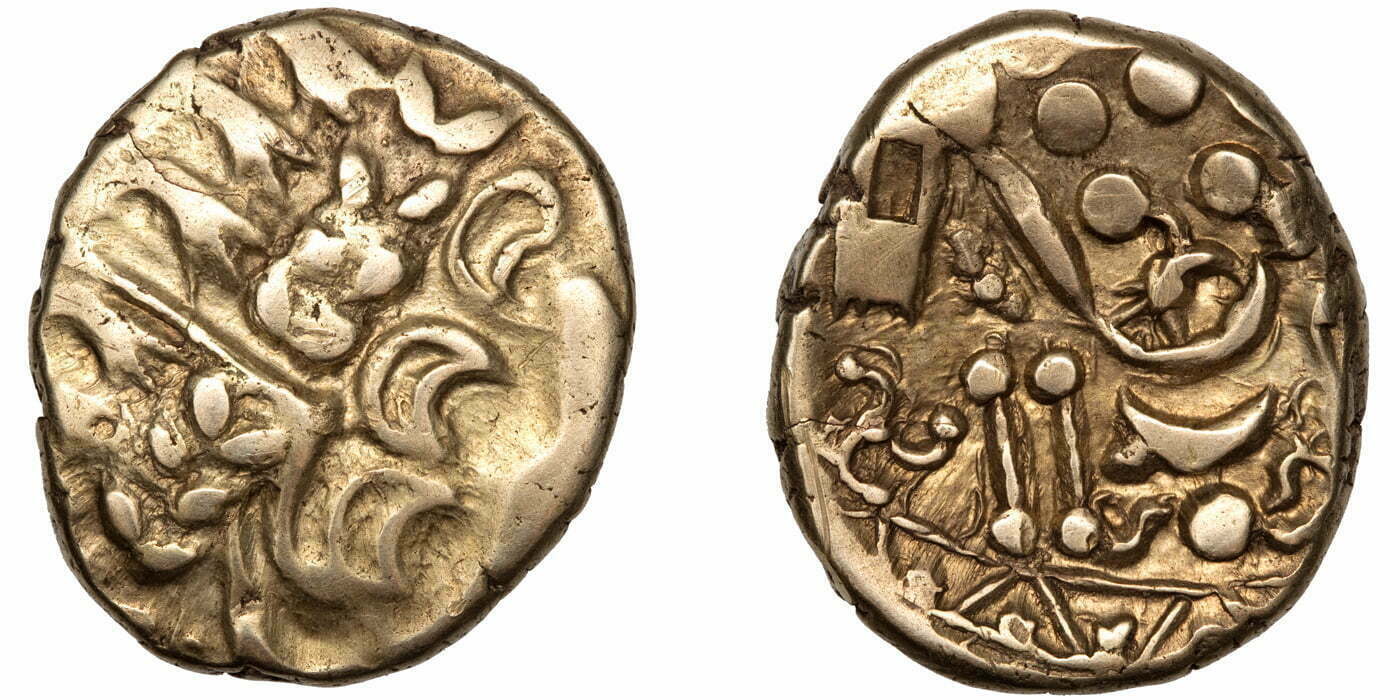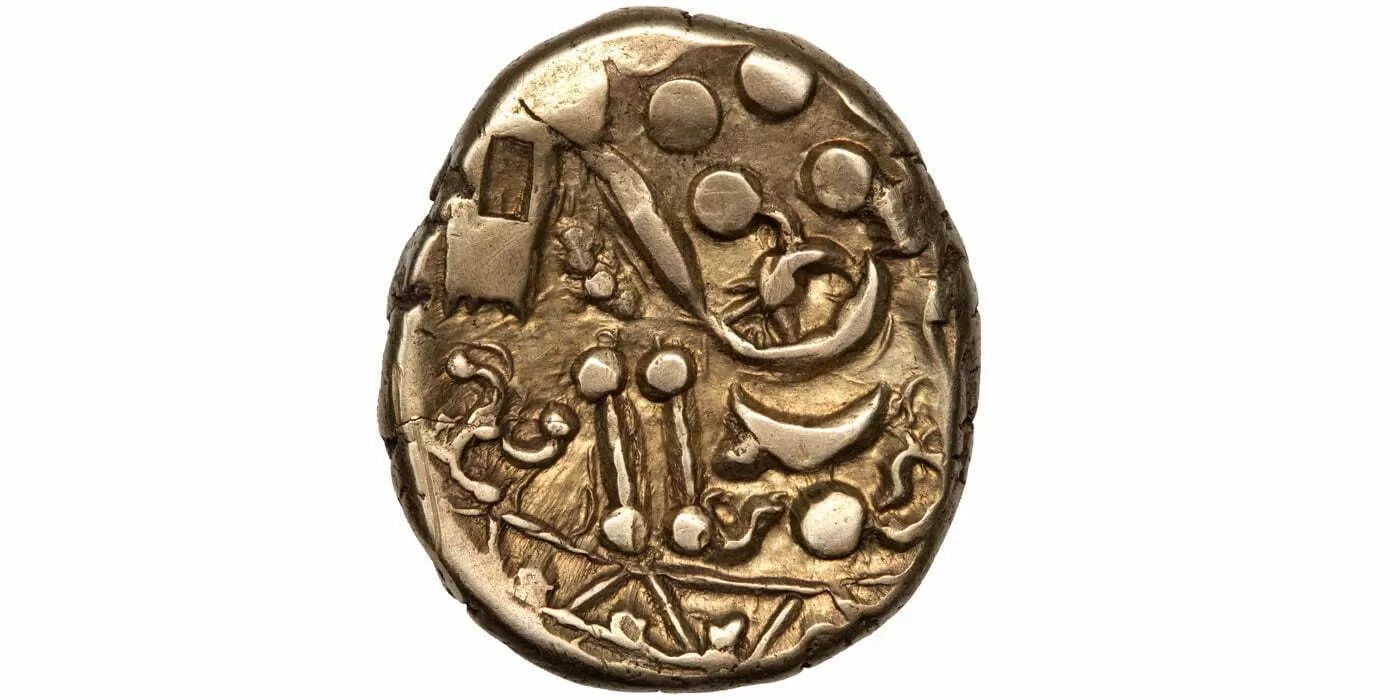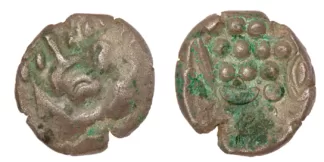Description
British B (Chute) gold stater. Ex. Whitchurch II Hoard. 6.11 grams, 18.8mm. Sills dies 8/78. c. 54-53 BC. ABC 746. DK 303. S. 22
The reverse of this beautifully-struck hoard stater comes from near the end of the Chute series and shows a number of features that differ from many other examples of the type; the pointed teeth on the horse, the swastika, the dotted reigns, and the three legged crab (it normally has 4 legs). These staters are attributed to the Belgae tribe, but it’s more likely that they were minted by an unknown tribe no longer in the historical record:
- The design on the staters is an indigenous Westerham design, but the Belgae consisted of tribes originally from northern Gaul, some newly arrived, who had their own distinctive style.
- British B was followed by British Da and then British Db before dropping out of the numismatic record. British D has a much smaller distribution, lower gold content, and lower weight, than British B. They appear to have been minted by a tribe that was losing territory and wealth.
- Chute staters have been found in many large hoards, and as a result is the insular coinage with the highest survival rate. If these hoards were still under the tribe’s control when British D was minted, then they would have been melted down and British D coins would have a higher gold content than they do. Their low gold content suggests that whoever minted them no longer controlled the territory where the British B hoards were buried.
From the Whitchurch II Hoard (IARCH-5C43F7). This hoard was seen as proof that British B was earlier than Gallo-Belgic E, the argument being that the worn British B staters in the hoard must have circulated for longer that the unworn Gallo-Belgic E staters. This conclusion was incorrect as it was die wear and not circulation wear. This mistake persisted until 2017 and had a detrimental effect on the intervening research (for example, see Bean, “The Coinage of the Atrebates and Regni” p. 21).
Celtic Coin Index – 91.0261 (this coin).
Published in “Coin Hoards in Iron Age Britain” page 197 (this coin).
Published in “Divided Kingdoms” page 312 (this coin).
Published in Burnett, A. and Cowell, M., 1988 “Celtic Coinage in Britain II“, British Numismatic Journal vol. 58, pp.6-8, pl. 9, coin 132 (this coin).





